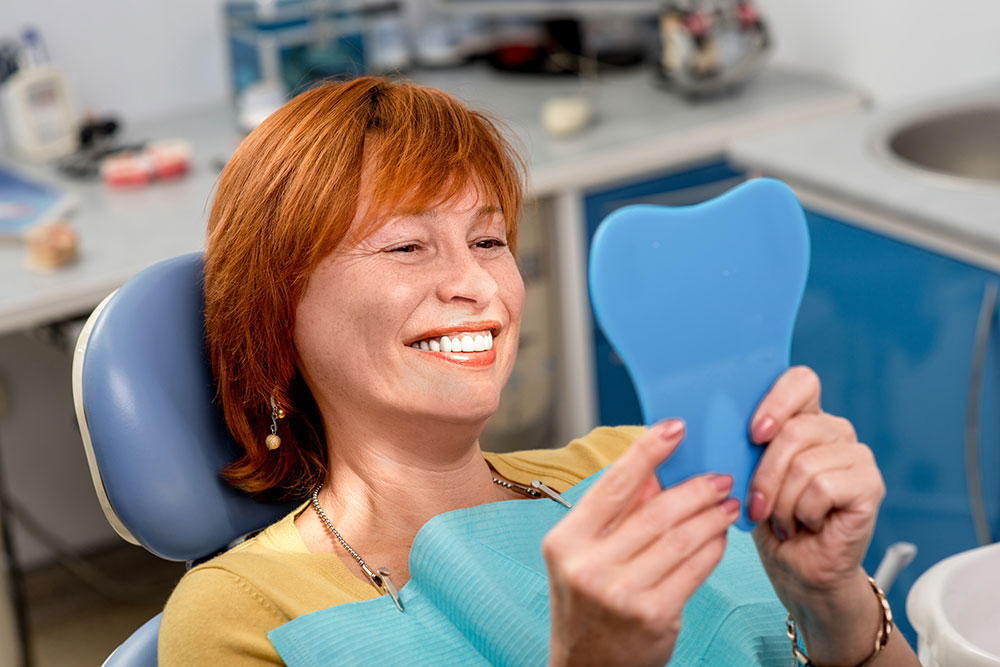Implants
Consult a specialist !

Advantages of treatment with implants
Absence of one or more teeth
In order to cover the gap created by the loss of one or more teeth with classical prosthetics, a fixed (bridge) or mobile construction (partial denture) should be used, which is supported by adjacent, often healthy teeth, which are often reamed and thus become weaker and more vulnerable. The bone of the jaw at the sites of the missing teeth is gradually absorbed since the stimulus transmitted through the root is no longer present.
The aesthetic and functional results with fixed constructions on natural teeth are of course very satisfactory but their prognosis is worse than the corresponding implant constructions and thus the final inconvenience and costs for the patient are not necessarily reduced.
The mobile construction gives very poor aesthetic and functional results, it is difficult to tolerate by the patient, in the places where it touches the gums it exacerbates bone resorption and it has been statistically shown that 30% of the adjacent teeth in a mobile prosthesis have problems within seven years.

The restoration of the missing one or more teeth with dental implants is done with a fixed independent unit (implant/s - abutment/s - socket/bridge) that offers excellent functional and aesthetic results without affecting adjacent teeth or gums.

The forces of chewing are transferred through the implants to the bone (as with natural teeth) and thus the absorption of the bone is prevented. Statistically, implants have a 15-year survival prognosis if science-based protocols are followed by both doctors and patients.
The patient is rewarded by the excellent functional and aesthetic results and the longevity of the result. The implant treatment gives him the feeling of having his natural teeth again.
Absence of all teeth
The lack of all teeth is treated by classical prosthetics with the construction of complete dentures (dentures). In the maxilla, their retention is acceptable but they are usually bulky constructions that make it difficult for the patient to speak and chew and cause severe bone resorption and gingival hyperplasia at the points where they are supported. In the lower jaw, things are even worse because the small bone surface of the lower jaw and the mobility of the tongue make it impossible to hold them in place, so that patients end up not using them at all as they are unable to speak or chew. They are relatively inexpensive solutions with many functional and aesthetic problems.
The restoration of all missing teeth with dental implants can be done with either a fixed independent unit or a mobile unit.
The fixed construction is based on the appropriate number of implants for each case and covers as much of the upper or lower jaw as possible. It is completely immobile, offering the patient complete functional and aesthetic satisfaction, with a similar feeling to that of lost natural teeth.

The mobile construction is significantly smaller than the classic denture, it is extremely stable, very satisfactory aesthetically and functionally, does not burden the gums and helps to maintain the bone.




